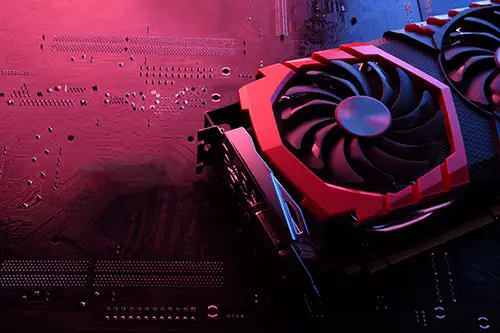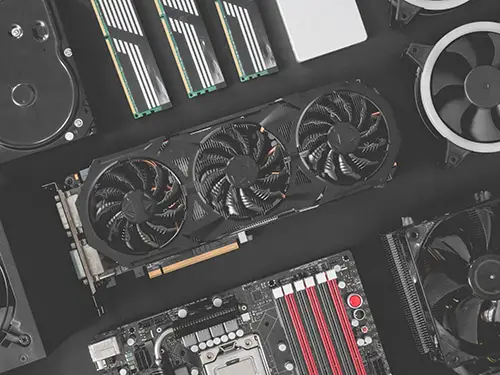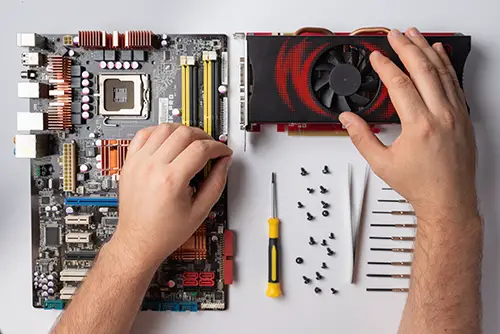
Do graphic cards die?
Probably not like the villain in a movie but yes with time and use your GPU or graphics card could wear out and render your PC unusable.
After reading the above sentence, many of you would think there a difference between a GPU and a graphics card?
The terms are used interchangeably. To be specific GPU is the main chip on a graphics card.
GPU issues can either be software or hardware related. Fortunately, these issues are easy to troubleshoot and resolve.
Read on to learn more about why graphic cards fail, signs on how to tell if your graphics card is dying and how to troubleshoot GPU issues.
Contents
Even though GPU issues are easy to troubleshoot and resolve, it might not come to your attention that your GPU is dead until some drastic happens.
What I mean is that we tend to ignore some of the signs that occur (I’ll get into that later). We think it’s a software issue or a one-time thing and either restart our PCs or hold the power button for 10s before we're back up and running.
These warnings build up and when ignored can lead to severe events such as your computer crashing or even catching on fire. It’s probably too later to salvage your GPU when this happens.
Graphics cards fail mostly because of the following reasons,
All of the above situations can be avoided by regular digital and physical maintenance of your system.
Always get professional help if you don’t have experience in hardware installation.

There isn’t a fixed period a GPU can last for. It depends on usage and how regularly you maintain your hardware and software.
Graphic cards nowadays are quite innovative and designed for demanding usage. Cards usually include more than one cooling fan, a metal backplate, and big heatsinks to divert the heat away from the GPU.
Remember that overheating of the GPU is the main cause of your card dying.
Always purchase from reputed or highly review brands to avoid poorly manufactured cards. Reputed brands usually provide a warranty to replace the card if it dies prematurely due to manufacturing issues.
All in all, if you maintain the card properly and only run applications that can be supported by your graphics card, it should last you an average of 5 years.
The screen might freeze or stutter. It is highly visible during gameplay because the frame rate will drop drastically.
This particular issue alone might not be the consequences of a dying graphics card so don’t jump into conclusions. Lag or shuttering can occur due to an unoptimized game, the presence of malware, a corrupted RAM, or hard drive.
If shuttering occurs along with other warning signs, it is quite likely that the issue is regarding the graphics card.
If you’ve observed weird colors or shapes appearing on your screen during gameplay or when you’re watching a movie it might be indicating a dying graphics card.
Again, screen glitches do not accurately indicate a dying GPU. It can also be a bad display cable or an outdated device driver
If the graphic defects start small and increase in size and frequency over time it is most likely due to a dying GPU
Similar to screen glitches this is another common sign.
If your computer starts showing small dots, weird lines and patterns, or visual garbage, your GPU may be nearing its final days.
When your PC is idle you wouldn’t notice artifacts on your screen. It comes up only when your GPU goes under load.
I’m sure you’ve come across the blue screen with a massive “ 🙁 “.
This screen pops up for several issues related to your RAM, Hard drive, graphics card, or any component of your PC.
A blue screen is an indicator of a dying graphics card when it pops up when you start a task that puts your GPU under load or in other words a graphics demanding task such as playing a game.
The hotter your GPU gets, the faster the fan will spin to cool it down. The faster your fan spins the louder it will be.
So, if you hear really loud fan noises, there could be something wrong.

Motherboards nowadays are designed to shut down a part that is not working. Therefore, the easiest way to find out if your graphics card is dead is to check for error codes on the motherboard.
You can’t tell if your GPU is dying with this method, you can only find out whether it is completely dead.
If your motherboard has error codes, you can remove the computer case and record the error codes on the motherboard and check it against your PC manual if it is indicating that the GPU is dead.
If your motherboard doesn’t have error codes you could listen to the Beeps when the PC is booting and check your manufacture's manual for what it means.
The display cable can also cause glitching and display issues. Check if both ends are connected securely.
Make sure the card is correctly plugged into the PCI slots properly without wiggle room. While you’re at it make sure that there is no damage on the fans which might cause the card to overheat.
Wipe off any dust because the collection of dust can also lead to overheating. This is mostly the case in a laptop where the space is limited and enclosed.
An overheated GPU usually means something is wrong with the fan or the application you are using cannot be supported by your current graphics card.
There are many applications to monitor the real-time temperature of your card.
This goes along with checking the temperature. You can check the temperature while performing your daily tasks such as gaming or 3D rendering. You can also download software specifically designed to test your GPU under load.
If the stress test shows that your GPU is working fine but it still overheats, the issue might be in the software. Upgrade your device driver thought device manager and it might solve your issue.
One of the simplest methods available is to switch your current card with another and see if the problem goes away.
If none of the signs are popping up with the new graphics cards, it is quite obvious that the old one is faulty or nearing its end. Regularly update your drivers. This simple step can save you quite a bit of cash in repairs and replacements.
So, I’ve mentioned a few signs of a dying GPU above. These might even indicate issues with other components. Therefore, always remember to troubleshoot your GPU as soon as you notice any of the signs I’ve mentioned.
